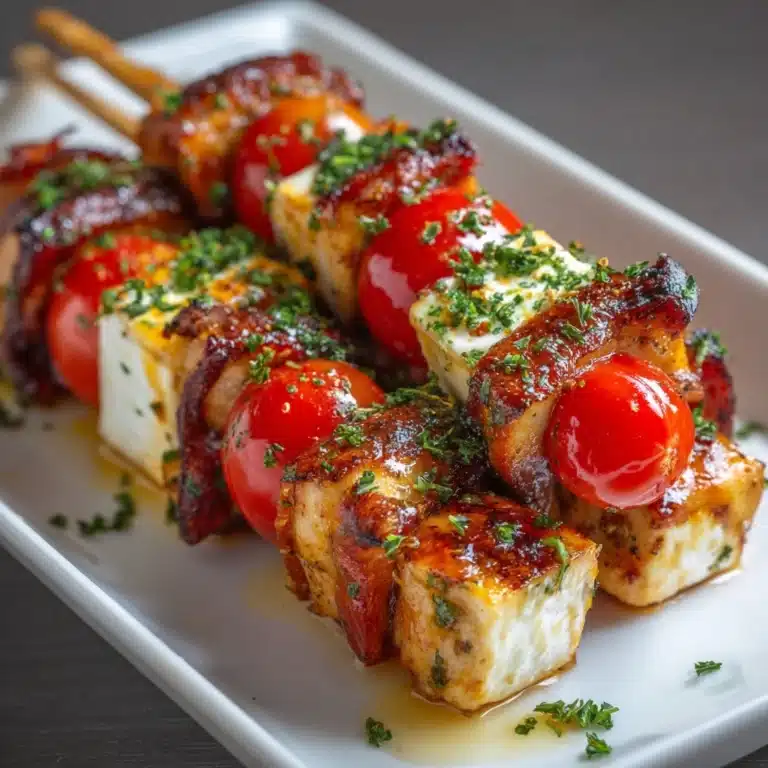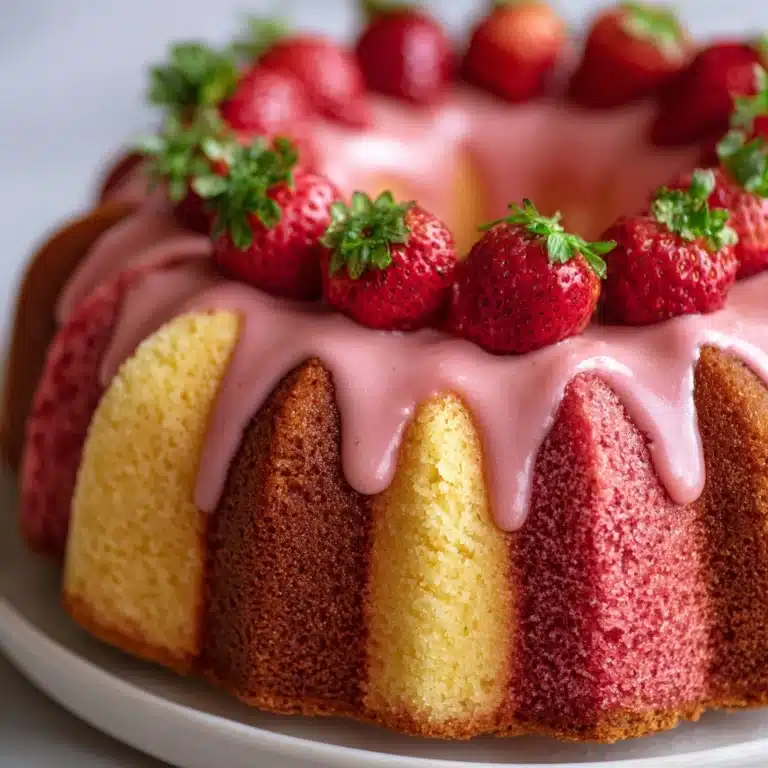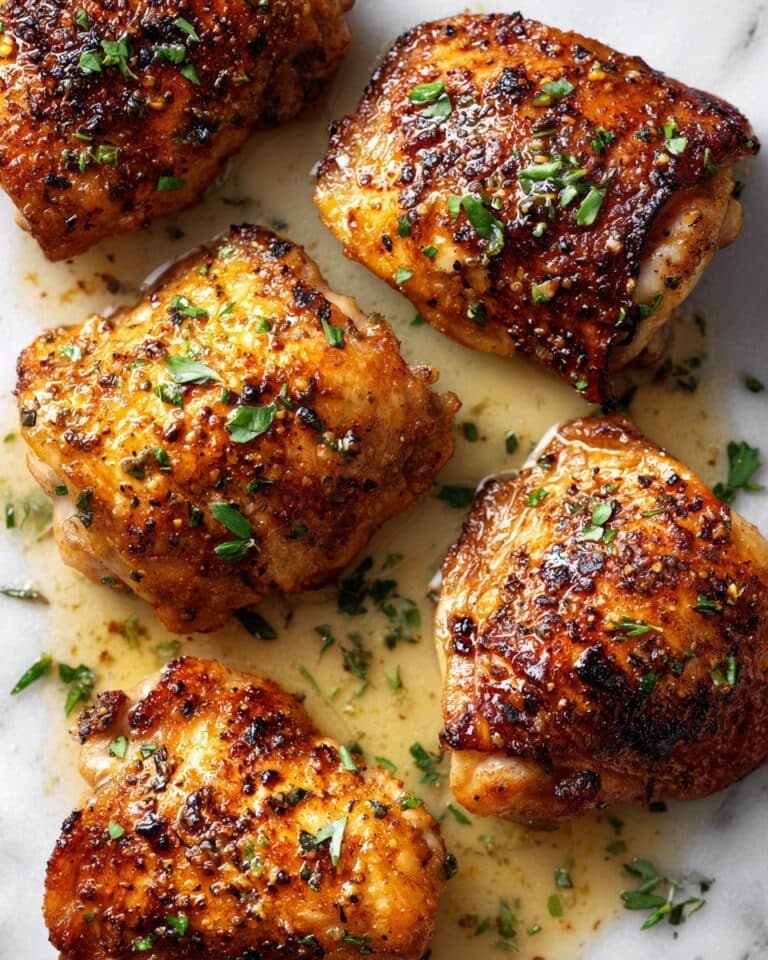Japanese Katsu Bowls with Tonkatsu Sauce Recipe
If there’s one meal that always delivers comfort, crunch, and pure satisfaction in every bite, it’s Japanese Katsu Bowls with Tonkatsu Sauce. This dish brings together perfectly crisp pork cutlets, a rainbow of fresh vegetables, fluffy steamed rice, and a sweet-savory Tonkatsu sauce that pulls it all together. It’s a crave-worthy Japanese classic you can easily make at home, and I’m so excited to guide you through every flavorful step.
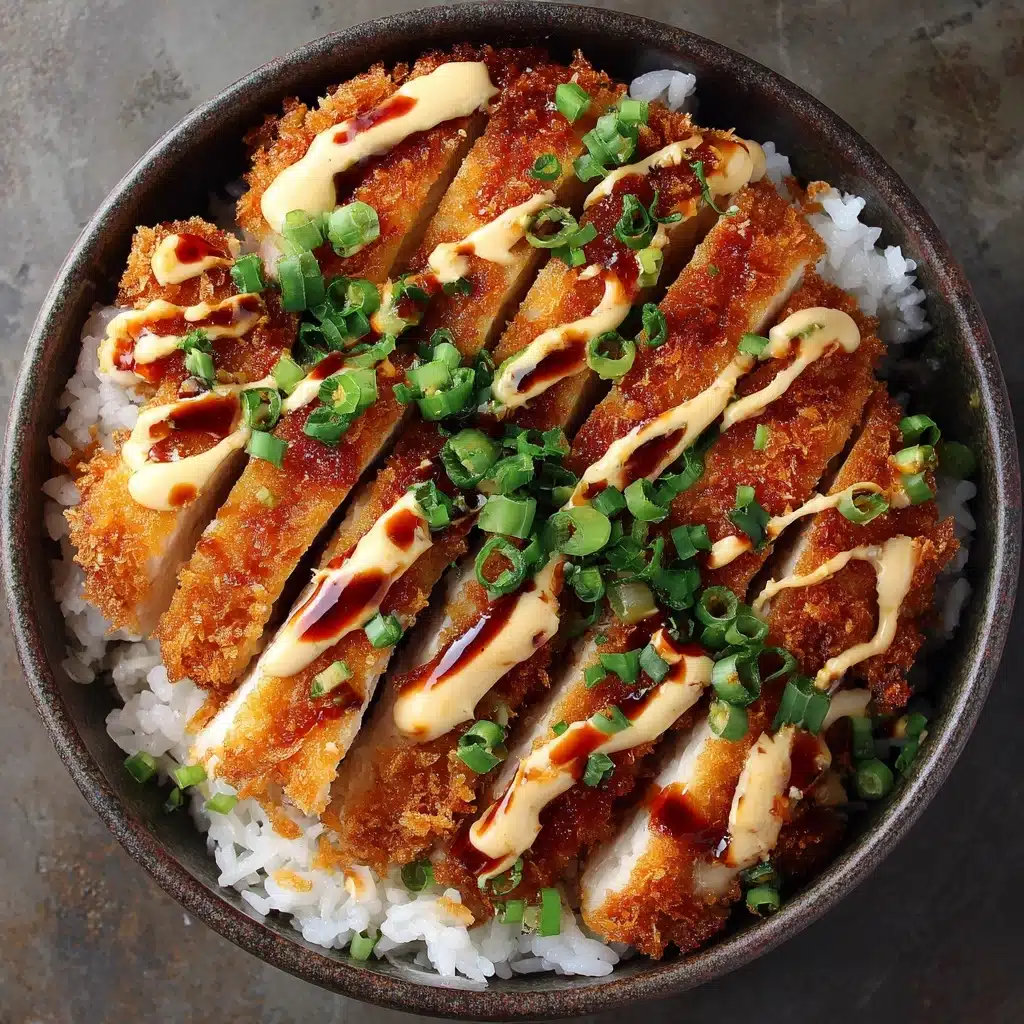
Ingredients You’ll Need
You won’t believe how just a handful of carefully chosen ingredients can come together to make Japanese Katsu Bowls with Tonkatsu Sauce shine. Each ingredient matters—from the crisp bite of cabbage to the umami-rich sauce—so don’t skip on the details!
- Pork cutlets: Use 4 boneless pork cutlets, about 1/2-inch thick, for the perfect balance of tenderness and crunch.
- Salt and pepper: A quick seasoning brings out the natural flavor of the pork—don’t skimp!
- All-purpose flour: Helps the egg and breadcrumbs adhere for that unbeatable crust.
- Eggs: Two large eggs, beaten, create the ideal sticky coating for your panko.
- Panko breadcrumbs: These Japanese-style breadcrumbs guarantee an extra-light, extra-crispy katsu.
- Vegetable oil: Frying in a neutral oil ensures a golden exterior without overpowering the pork.
- Cooked white rice: Use 2 cups of warm, fluffy short-grain rice as the comforting base for your bowl.
- Shredded green cabbage: Adds freshness, crunch, and a beautiful lift to the dish.
- Sliced cucumbers: Their cool, crisp bite cuts through the richness of the katsu.
- Shredded carrots: Sweet, colorful, and packed with nutrients, they round out the veggie toppings.
- Green onions: Sliced thin, these offer a gentle bite and gorgeous pop of color.
- Toasted sesame seeds: Sprinkle for a nutty aroma and a satisfying finish.
- Ketchup: The base of your homemade Tonkatsu sauce, for tangy sweetness.
- Worcestershire sauce: Brings umami depth with a touch of sharpness.
- Soy sauce: Adds essential savory notes and balance to the sauce.
- Mirin: This sweet rice wine laces the sauce with a delicate sweetness.
- Sugar: Just a bit to harmonize the savory and tangy elements.
- Dijon mustard: A little goes a long way, adding gentle heat and depth to your Tonkatsu sauce.
How to Make Japanese Katsu Bowls with Tonkatsu Sauce
Step 1: Prep the Pork Cutlets
Start by seasoning your pork cutlets generously on both sides with salt and pepper. This simple step sets the base for a flavorful, juicy bite. If you want them extra tender, you can gently pound each cutlet to an even thickness using a meat mallet or rolling pin. This also helps them cook quickly and evenly, resulting in perfect, golden katsu every time.
Step 2: Dredge and Bread the Pork
Set up a breading station with three shallow dishes: one for flour, one for beaten eggs, and one for panko breadcrumbs. Dredge each pork cutlet first in flour, shake off the excess, then dip into the egg, making sure it’s fully coated. Finally, press it firmly into the panko, ensuring every inch is covered for an irresistibly crunchy crust.
Step 3: Fry to Crispy Perfection
Heat about half an inch of vegetable oil in a large skillet over medium-high heat. When the oil is shimmering (test it by dropping in a breadcrumb—it should sizzle), carefully lower in the breaded cutlets. Fry each one for 3–4 minutes per side, or until beautifully golden brown and cooked through. Transfer them to a paper towel-lined plate to rest for a couple of minutes—this keeps them juicy inside and prevents sogginess.
Step 4: Make the Tonkatsu Sauce
While the pork is resting, whip up your homemade Tonkatsu sauce. In a small bowl, whisk together ketchup, Worcestershire sauce, soy sauce, mirin, sugar, and Dijon mustard until the mixture is smooth and glossy. It’s tangy, sweet, and deeply savory—the flavor backbone of Japanese Katsu Bowls with Tonkatsu Sauce!
Step 5: Assemble the Bowls
Spoon fluffy rice into four bowls as your base. Top each with a generous handful of shredded cabbage, sliced cucumbers, and shredded carrots for vibrant crunch. Slice the katsu into strips and lay them on top, then drizzle generously with your homemade Tonkatsu sauce. Add a final flourish of green onions and toasted sesame seeds for aroma and color.
How to Serve Japanese Katsu Bowls with Tonkatsu Sauce
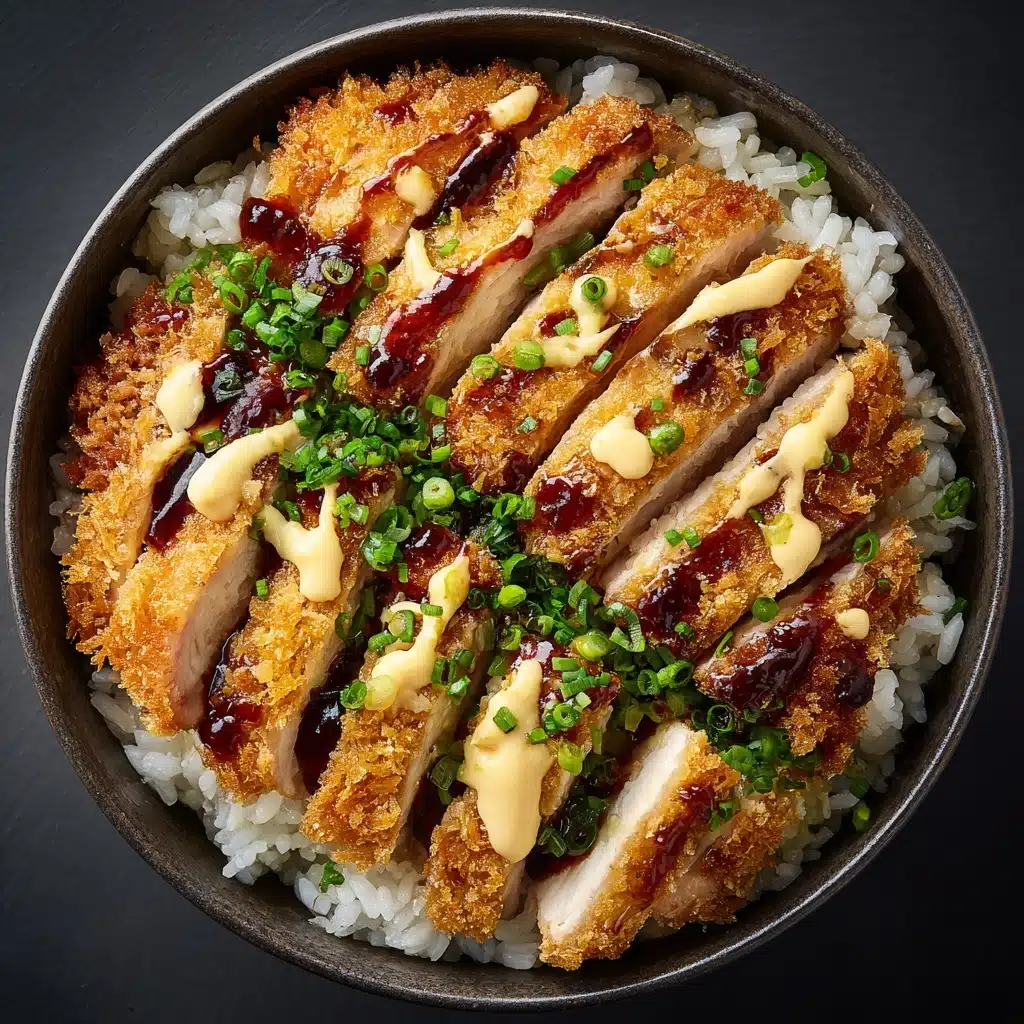
Garnishes
The magic finishing touches on Japanese Katsu Bowls with Tonkatsu Sauce are green onions and a sprinkle of toasted sesame seeds. They bring a fresh, aromatic lift to the hearty fried pork, and the seeds offer a gentle toasted nuttiness. If you want to go the extra mile, a few strips of nori or a sprinkle of pickled ginger truly take this bowl to the next level.
Side Dishes
Round out your meal the authentic way by serving your katsu bowls alongside classic Japanese sides. Miso soup is a natural match, bringing warmth and umami. A small dish of pickled ginger or Japanese pickles (tsukemono) will cut through the richness and cleanse your palate between bites. For a full bento-inspired spread, add steamed edamame or a crunchy seaweed salad.
Creative Ways to Present
If you’re feeling playful, serve Japanese Katsu Bowls with Tonkatsu Sauce in wide, shallow bowls to show off every ingredient’s color and texture. Or, make a DIY katsu bar for a crowd, letting everyone build their own—kids and adults alike will love it. For a lunchbox option, layer the ingredients in a bento box for a meal that’s as beautiful as it is delicious.
Make Ahead and Storage
Storing Leftovers
If you’re lucky enough to have leftovers, store each bowl component separately to preserve their flavors and textures. Keep the sliced katsu in an airtight container in the fridge, and store the rice and vegetables in separate dishes. The homemade Tonkatsu sauce will keep beautifully in a small jar; just give it a quick stir before serving again.
Freezing
Japanese Katsu Bowls with Tonkatsu Sauce are fantastic for batch-cooking. After frying and cooling, freeze the sliced katsu cutlets in a single layer on a baking sheet. Once solid, transfer them to a freezer-safe bag for up to two months. Thaw overnight in the fridge before reheating—you can even freeze extra Tonkatsu sauce for a make-ahead shortcut.
Reheating
The secret to crispy, “just-fried” katsu is reheating in the oven or an air fryer at 375°F for 8–10 minutes. This keeps that golden crust crackly and delicious. Microwave reheating is quick, but the crust will soften a bit—still super tasty, just a touch less crisp. Warm the rice and sauce separately, then assemble as usual for a dinner that tastes as fresh as day one.
FAQs
Can I use chicken instead of pork?
Absolutely! Chicken cutlets work perfectly in Japanese Katsu Bowls with Tonkatsu Sauce. Just make sure to use boneless, skinless breasts or thighs pounded to an even thickness and follow the same breading and frying steps.
Is it possible to make this dish gluten-free?
You can easily adapt this recipe by swapping the flour and panko breadcrumbs for your favorite gluten-free versions. Be sure to check that your soy sauce and Worcestershire sauce are gluten-free as well to keep everything safe and delicious.
Can I air-fry the katsu instead of deep-frying?
Yes! For a lighter take, spray the breaded cutlets with oil and air-fry at 400°F for about 10–12 minutes, flipping halfway through. You’ll still get a satisfyingly crispy katsu, with less oil but all the flavor.
What type Main Course
Short-grain Japanese white rice is the classic choice, prized for its stickiness and delicate flavor. If you need a substitute, medium-grain rice or even brown rice will work—just aim for something with a bit of cling to help everything hold together in your bowl.
How do I make the Tonkatsu sauce ahead of time?
Tonkatsu sauce keeps beautifully in the fridge for up to a week and can be made well in advance. Just whisk everything together, store it in a sealed jar, and give it a fresh stir before drizzling over your next bowl. You’ll love having homemade sauce on hand for all sorts of Japanese-inspired meals!
Final Thoughts
If you’re looking for a new go-to comfort food or want to impress your family and friends, Japanese Katsu Bowls with Tonkatsu Sauce should be at the top of your list. Every bite is crunchy, saucy, and deeply satisfying. Try it once, and I promise you’ll be making these golden katsu bowls again and again. Happy cooking!
Print
Japanese Katsu Bowls with Tonkatsu Sauce Recipe
- Total Time: 30 minutes
- Yield: 4 servings 1x
- Diet: Non-Vegetarian
Description
These Japanese Katsu Bowls with Tonkatsu Sauce are a delicious and satisfying meal featuring crispy breaded pork cutlets served over fluffy rice and crunchy vegetables, drizzled with a savory-sweet Tonkatsu sauce.
Ingredients
Pork Cutlets:
- 4 boneless pork cutlets (about 1/2-inch thick)
- Salt and pepper to taste
- 1/2 cup all-purpose flour
- 2 large eggs (beaten)
- 1 cup panko breadcrumbs
- Vegetable oil for frying
Additional Ingredients:
- 2 cups cooked white rice
- 1 cup shredded green cabbage
- 1/2 cup sliced cucumbers
- 1/2 cup shredded carrots
- 2 green onions (sliced)
- 1 tablespoon toasted sesame seeds
Tonkatsu Sauce:
- 1/4 cup ketchup
- 2 tablespoons Worcestershire sauce
- 1 tablespoon soy sauce
- 1 tablespoon mirin
- 1 tablespoon sugar
- 1 teaspoon Dijon mustard
Instructions
- Prepare Pork Cutlets: Season pork cutlets with salt and pepper. Dredge in flour, dip in beaten eggs, then coat with panko breadcrumbs. Fry in oil until golden brown and cooked through.
- Make Tonkatsu Sauce: Whisk together ketchup, Worcestershire sauce, soy sauce, mirin, sugar, and Dijon mustard until smooth.
- Assemble Bowls: Divide rice into bowls. Top with cabbage, cucumbers, carrots, and sliced katsu. Drizzle with Tonkatsu sauce. Garnish with green onions and sesame seeds.
Notes
- You can substitute chicken cutlets for pork.
- For a lighter version, air-fry the katsu at 400°F for 10–12 minutes.
- Serve with miso soup or pickled ginger for a complete Japanese meal.
- Prep Time: 15 minutes
- Cook Time: 15 minutes
- Category: Main Course
- Method: Frying
- Cuisine: Japanese
Nutrition
- Serving Size: 1 bowl
- Calories: 620
- Sugar: 10g
- Sodium: 750mg
- Fat: 28g
- Saturated Fat: 6g
- Unsaturated Fat: 20g
- Trans Fat: 0g
- Carbohydrates: 65g
- Fiber: 3g
- Protein: 32g
- Cholesterol: 135mg



